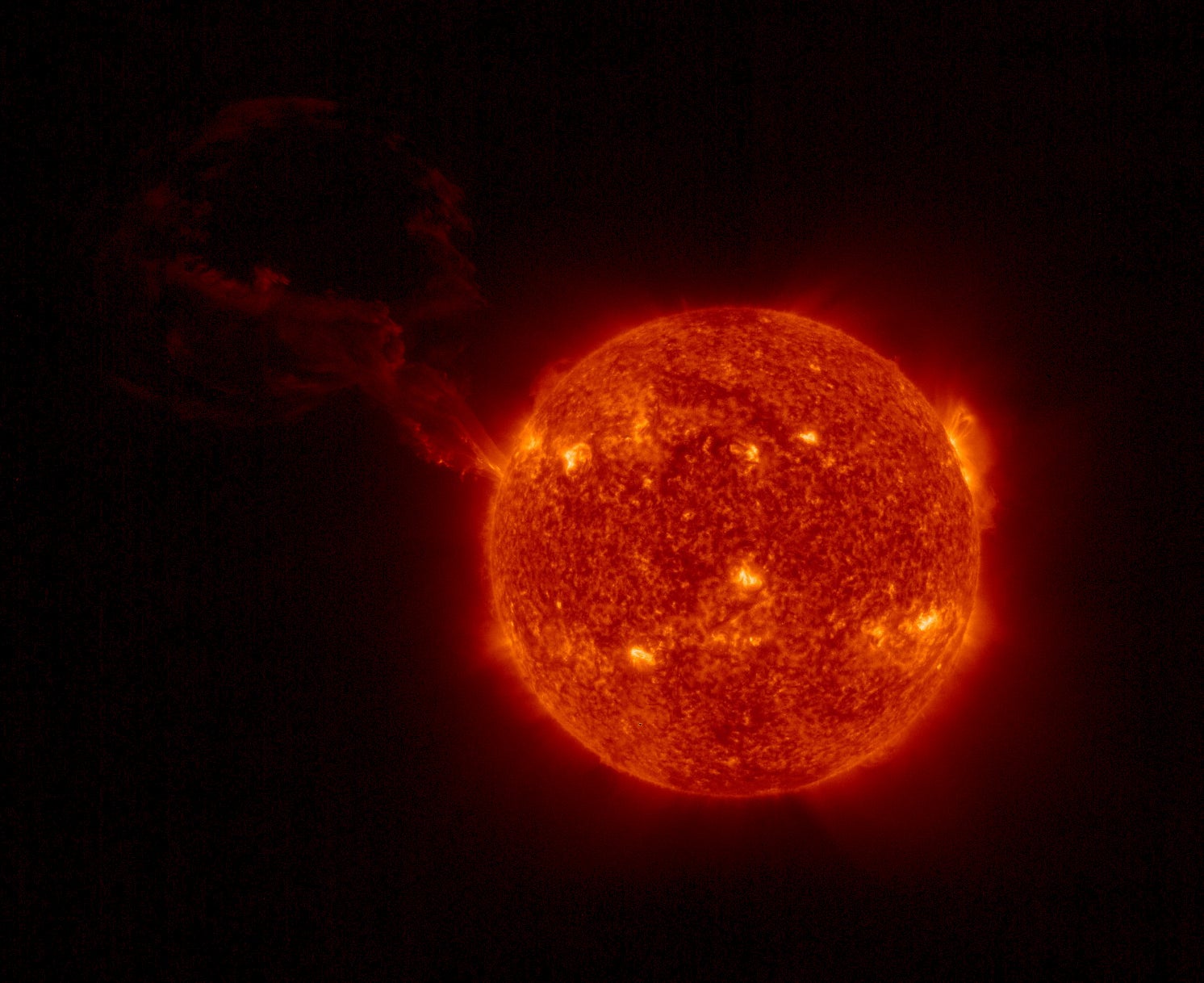Nasa spacecraft sees huge ‘eruption’ coming out of the Sun

Your support helps us to tell the story
From reproductive rights to climate change to Big Tech, The Independent is on the ground when the story is developing. Whether it's investigating the financials of Elon Musk's pro-Trump PAC or producing our latest documentary, 'The A Word', which shines a light on the American women fighting for reproductive rights, we know how important it is to parse out the facts from the messaging.
At such a critical moment in US history, we need reporters on the ground. Your donation allows us to keep sending journalists to speak to both sides of the story.
The Independent is trusted by Americans across the entire political spectrum. And unlike many other quality news outlets, we choose not to lock Americans out of our reporting and analysis with paywalls. We believe quality journalism should be available to everyone, paid for by those who can afford it.
Your support makes all the difference.A huge “eruption” has been spotted coming out of the Sun.
Such violent eruptions are often associated with coronal mass ejections, a cause of dramatic solar weather that can “wreak havoc with technology and our everyday lives”, according to the European Space Agency.
The “solar prominence eruption” is the biggest of its kind ever seen in one image, according to Esa and Nasa, which together operate the Solar Orbiter that took the picture.
The eruptions are made up of huge structures of entangled magnetic fields, which pack together solar plasma above the surface of the Sun. They sometimes take the form of vast arching loops, as can be seen in the new image.
The striking cloud of plasma sen in the image extended millions of kilometres into space and was captured on 15 February.
In this case, the coronal mass ejection or CME was pointing away from Earth. The eruption did not leave a signature on the solar disc as it faces the spacecraft, meaning that it must have started on its far side.
The solar orbiter is headed closer to the Sun, when it will be able to use its imaging tools to take even more detailed pictures of the Sun, which will then take up much more of its view.
But for now, as the orbiter heads towards the star, there is still space around the sides of the Sun. That “viewing margin” – which at the moment extends out 3.5 million kilmetres, or five times the radius of the Sun – allowed the spacecraft to capture the eruption in its full scale.
Scientists hope that unprecedented view can allow them to study the behaviour in more detail than ever.
They also hope that they can be combined with observations from other spacecraft studying the Sun, such as the Parker Solar Probe, which was also watching during the eruption.
Join our commenting forum
Join thought-provoking conversations, follow other Independent readers and see their replies
Comments